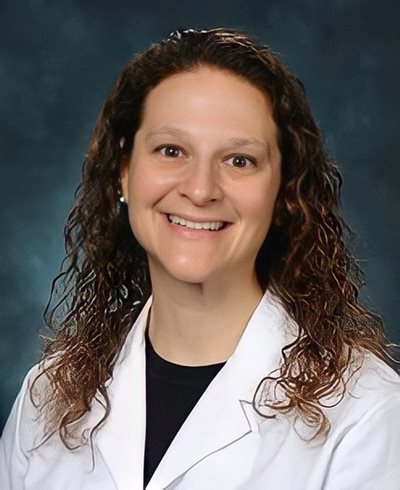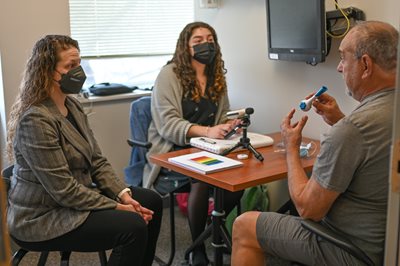When Kelly Salmon, SLPD, CCC-SLP, BCS-S, CLT-LANA, NDC, found out a poster on which she collaborated had won a People’s Choice Award at the Dysphagia Research Society (DRS) conference, she did a little happy dance in the privacy of her own home.
 She admits, however, there is no video evidence of that celebration. Still, that doesn’t take away from the fact that it was a pretty big deal.
She admits, however, there is no video evidence of that celebration. Still, that doesn’t take away from the fact that it was a pretty big deal.
Dr. Salmon, an assistant professor in the Speech-Language Pathology (SLP) department at Salus University — along with SLPs Lauren Hermann, MS, CCC-SLP and Maggie Donaker, MS, CCC-SLP and radiologist Benjamin Mervak, MD — presented a poster titled “Interprofessional Collaboration in the Fluoroscopy Suite: The Perceptions of Speech-Language Pathologists and Radiologists Surrounding Videofluoroscopic Swallow Studies Purposes and Procedures” that was among the top three posters to win the DRS People’s Choice Award at the group’s virtual conference in mid-March.
“All of us were excited and pleasantly surprised. I don’t think we were necessarily expecting to get recognized in that way,” said Dr. Salmon. “What made it even more meaningful is that it was a People’s Choice Award. The people who attended the convention virtually chose us as one of their top posters based on the work that we had done. I think it meant even more to us that it was our peers who had chosen us.”
The poster detailed a survey-based research study to find out more about how speech-language pathologists and radiologists might differ in their opinions of how video swallowing studies should be completed. These video swallowing studies are specifically ones that are done to evaluate the ability of individuals with dysphagia, or difficulty swallowing, to eat and drink safely.
According to Dr. Salmon, the idea was to try to find out whether SLPs and radiologists agree or disagree on how the studies should performed and to determine whether there should be a standardized protocol followed so they're all looking at the same things, commenting on the same things, and using the same language in terms of how they interpret these studies.
 “What we actually found out was that speech pathologists and radiologists disagreed on most of the points that we asked about, with the exception of one,” said Dr. Salmon. “Where we could all agree was that there should be a standardized protocol for performing these studies so that we all are working together on the same page.”
“What we actually found out was that speech pathologists and radiologists disagreed on most of the points that we asked about, with the exception of one,” said Dr. Salmon. “Where we could all agree was that there should be a standardized protocol for performing these studies so that we all are working together on the same page.”
The next step will be gathering the opinions of both more speech pathologists and radiologists. The group was limited this time in that it did get a lot of participation from SLPs but not as much from the radiologists for this survey.
"So, our goal is to follow up with another survey that asks some follow-up questions to see if we can’t come to some more conclusions about how we can meet in the middle as professions to serve our patients in the best way possible,” said Dr. Salmon.
The DRS conference, originally scheduled to be held in person in San Juan, Puerto Rico, was switched to a virtual platform out of the abundance of caution and to meet early deadlines for registration and participation during a time when the pandemic was still threatening for in-person events.